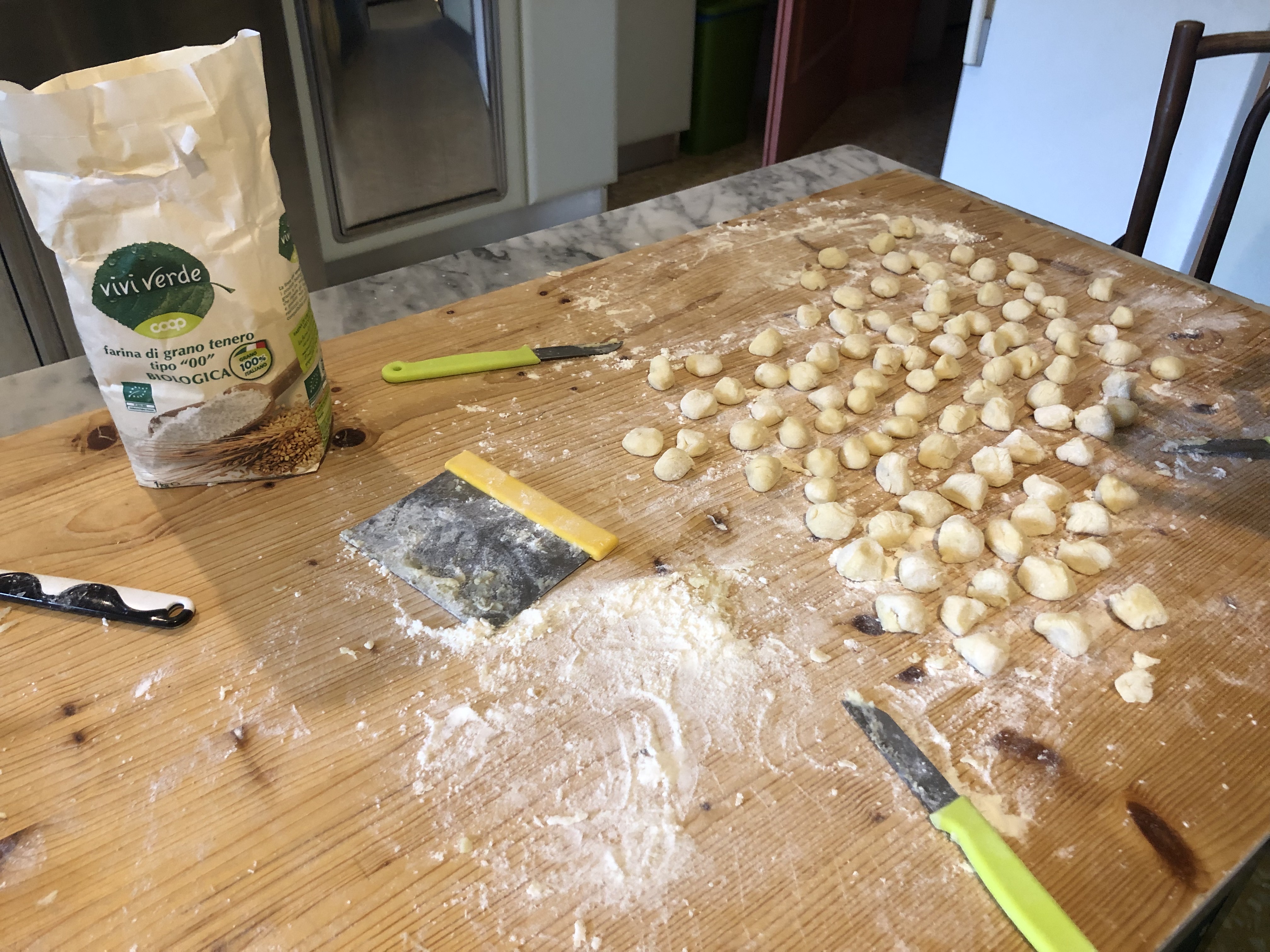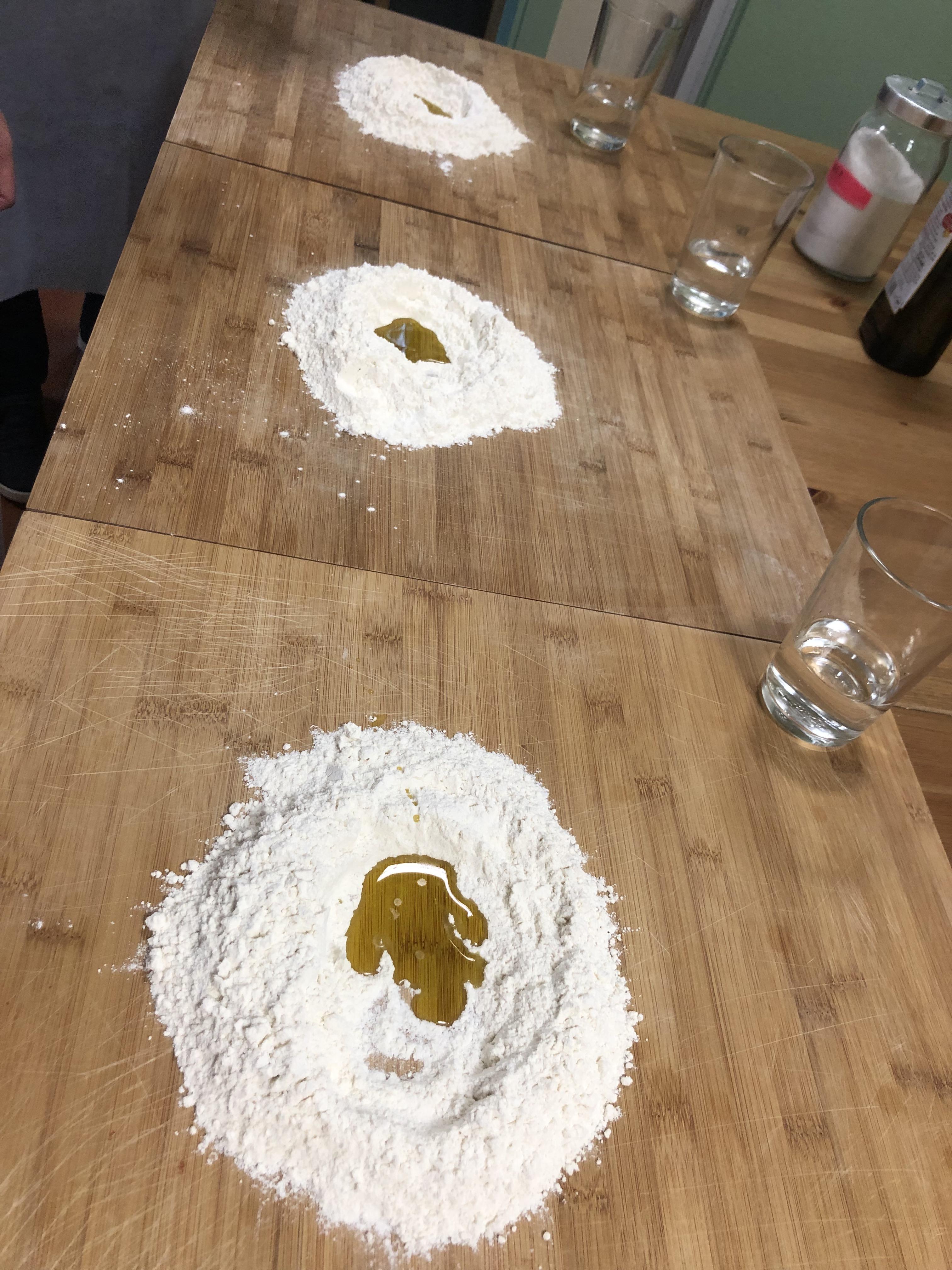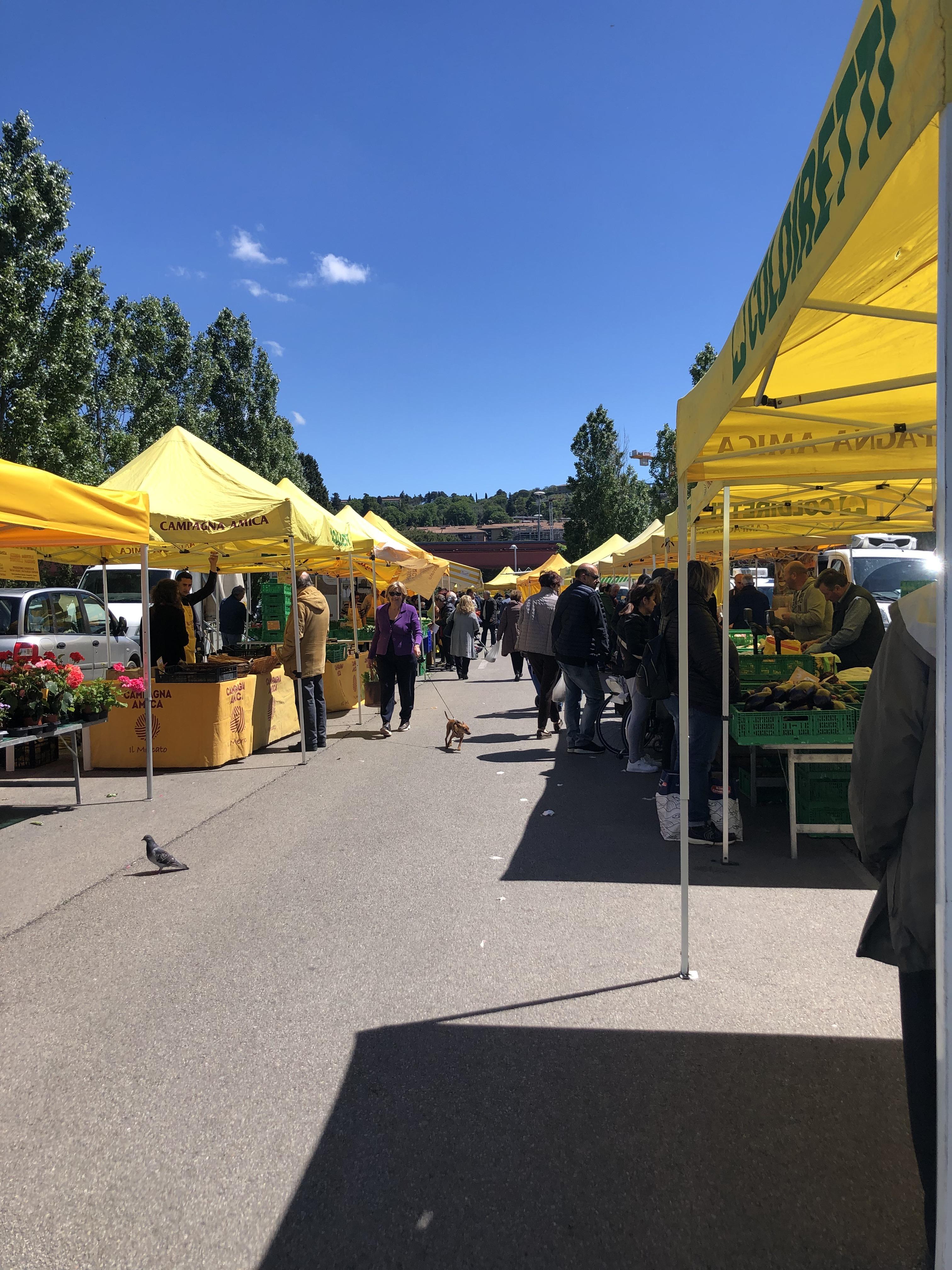Contact Info
Location
65 S. Sandusky St.
Delaware, OH 43015
E ddmarkwa@owu.edu
David Markwardt, Associate Dean of the OWU Connection

Background
Despite a large body of research, public health interventions, and ever-increasing program funding, the U.S. continues to experience high levels of diet- and lifestyle-related chronic disease (CDC, 2018). The US spends nearly $10,000 on healthcare, while lagging behind countries like Italy—which spends 1/3 of this—in health, longevity and quality of life (OECD, 2017). A better understanding of the socio-cultural context within which preventative health behaviors operate in a country like Italy is key to developing effective action to improve health and quality of life in the U.S.
The Blue Zones Project (BZP) has gained traction as an evaluation tool and approach to health and lifestyle improvements (Buettner, 2015). The BZP developed out of descriptive research by Poulain et al. (2004) that examined an area of Sardinia (Italy), which has a large concentration of centenarians. In the time since, other regions of the world have been identified as Blue Zones, and 9 different concepts (called the Power 9) are purported to be shared among these Blue Zones regions. After the initial peer-reviewed research on Blue Zones there has been a relative lack of further evidence and exploration of how these concepts occur in free-living contemporary U.S. (and Italian) contexts.
The goal of this project is to use sound theoretical principles from the Social Ecological Model (Stokols, 1996), McMillan and Chavis's Sense of Community Theory (1986), and Oldenberg's conception of Third Place (1999) to develop an understanding of how settings where community members access food and physical activity impact quality of life, and contrast those with the aforementioned BZP factors.
Project Aims
Our specific aims for this project were to:
Methods
We achieved our aims by conducting observations and interviews in Central Ohio and Perugia Italy in settings related to food, such as restaurants, farmer's markets and in kitchens with chefs. We did not reach our objective of examining the lived experiences of people related to physical exercise, but we did explore the BZP concept of natural movement and its contribution to the longevity in Italy. We used theories around food and place, such as Third Place, in addition to theories about sense of community and sense of purpose to examine our findings. The BZP concepts we drew connections to with these theoretical frameworks were moving naturally, sense of purpose, and plant slant.

We altered our interviewee list by removing three sites in Central Ohio (and adding four new sites) because of an inability to coordinate schedules with some potential informants. Otherwise, we completed all of the interviews we described in the project proposal. We focused our questions around food and place, community and purpose, rather than switching gears to discuss physical activity. We dug deeper into examining the accessibility of healthy foods based on their location and cost effectiveness. Discussing accessibility revealed the presence of natural movements, such as walking to school or the store, in these communities.
Results and Discussion
Our main theories when proposing this project were the Blue Zones Solution, McMillan and Chavis's Sense of Community Theory (1986), and Oldenberg's conception of Third Place (1999). The Blue Zones Project has gained traction as an evaluation tool and approach to health and lifestyle improvements (Buettner, 2015). They have identified 9 different concepts that support longevity: move naturally, purpose, downshift, 80% rule, plant slant, wine at 5, right tribe, loved ones first, and belonging. Sense of Community Theory suggests that membership, influence, integration, fulfilment of needs, and shared emotional connection are the tangents that impact a person's sense of community. Membership comes with a sense of security, belonging and personal investment. People want to believe that they will have an influence on their community and they want to give and receive positive reinforcement (McMillan & Chavis, 1986). Third Place is the idea that most community connection occurs in a place rather than home or work (Oldenburg, 1999) - which is illustrated in places such as community plazas, coffee shops, restaurants, etc. Some aspects from the Blue Zones Power 9 (concepts for longevity) that we saw were: move naturally, purpose, loved ones first, and belonging. Belonging is a concept that fits in with the Sense of Community Theory and into a common theme that we saw: access. We found that other Blue Zones concepts that relate to accessibility are natural movements, purpose, and right tribe. However, this theme of accessibility goes into a deeper question: access to food or access through food? We looked further into this comparison and our observations will be further discussed in the following paragraphs. Another common theme was food as a way of living versus a way of making a living; the Blue Zones concepts of purpose and loved ones first also play a role in this.
While the various observational and interview data connected with aspects of the Blue Zones, Sense of Community, and Third Place theories - after analyzing our results two major themes emerged: "Food as a way of making a living," and "Food access? Or access THROUGH food?"
In the United States, when we say "making a living," we generally assume it to be a financially-focused statement. If someone in the United States opens a restaurant to make a living, they typically use food as a way to make money to live. Americans often focus on the money that food produces before they focus on the quality of the food they are cooking and selling. In the United States, food is seen in a business sense, while Italy sees food as a powerful part of society that has the ability to bring a sense of purpose into people's lives. In Italy, we found that the majority of people use food to make a life that fulfills their purpose. Italians see food as a powerful social connector that offers opportunities to all members of society rather than just something that produces money to pay the bills. Money is essential for businesses to remain functional anywhere, but money is more of a driving factor for entrepreneurship in the United States.
One example from Central Ohio is from Trisha Clark at the Clintonville Farmers Market. Prior to the interview, we understood that this was a popular, community-oriented Farmer's Market. Trisha talked a bit about community education and interaction, but her focus was more on money rather than on the sense of community or nutritional value of the products at the market. She directly stated that her goal was "to make as much money as possible." We question whether this drive for money contributes to what seems like a lower job satisfaction in our settings in the United States than in Italy. Another example of the American emphasis on money is from the interview with Richard from J. Gumbo's in Delaware, Ohio. He started his business as an opportunity to employ people with disabilities. He kept the business and the types of food very simple so he could make sure he was giving his employees an additional place for social interaction and practicing fine motor skills. However, he feels that his cajun cuisine is not popular in Delaware and the owner works long hours to keep the restaurant in business. He is worried about how he will provide for his family if he doesn't make enough money. His time, energy, and focus has shifted on making money because he needs to support his family. This has made his purpose focus on money and has ultimately separated him from his original purpose of helping people through food.
On the contrary, we spoke with Francesca Tatticchi who owns two restaurants in Perugia, Italy; Nadir and Miramao. She opened Nadir and Miramao to live her purpose, which was providing sustainable, good food to everyone. Tatticchi believes that food can bring many different kinds of people together. Food can bring out ideas, create passions, and inspire others. She believes that food is a basic human right and food needs to be available to all types of people.
Letizia Mattiacci from Alla Madonna Del Piatto Cooking School has found her purpose through cooking. She has her Ph.D. in entomology and worked in the science field for many years, but she longed for more time with her family and in the kitchen. Her time in entomology wasn't giving her the satisfaction she had always desired. She enjoyed cooking because it gave her something to do with her hands and it gave her a sense of purpose. She believes that food that is made the "right way" with fresh ingredients helps foster a community.

One worker that we interviewed at a bakery expressed how her job has helped her live a meaningful life. The woman working there expressed how much she loved her job and that she would miss it when she retired. The woman knew about every product and all of the ingredients used to bake it. She offered us samples and even shared which breads were her favorite. She recognized every person that walked through the door and formed relationships with her regular customers. She was very passionate about her job and had high job satisfaction, which is not as common in our culture today.
At our cooking class with chef Christian Palazzi, he delved into the process of entering the culinary world in Italy. He started as a waiter and worked his way up through the restaurant business before he was able to work as a chef in the kitchen. He now owns his own restaurant and teaches cooking classes; this schedule allows him to spend more time with his family while also doing what he loves. He emphasized that cooking can bring community members together. For example, his sous chefs have Down Syndrome and cooking is an activity that relaxes them and gives them to interact with more people. He lives his purpose by doing what he loves (cooking), spending time with his family, and helping people with disabilities.

A similarity we studied between Ohio and Perugia is that many culinary workers hope to help people, serve their community, and spend time with their families. However, conversations about money seemed to overpower the interviews in Ohio. In Ohio, money seemed to be the reason why culinary workers weren't satisfied or living out their dreams. Money seems to be the determining factor of whether or not a person is successful or not in Ohio. While the interviews in Perugia never once mentioned anything fiscal. This observation leads us to the clear emergence of specific instances demonstrating that food is a way of living in Italy, while it is a way of making a living in the United States. Entrepreneurs in the United States may not begin their careers with financial goals in mind, but our culture puts a big emphasis on wealth and the power that wealth offers. The pressure in the United States to be financially successful may also contribute to the lower job satisfaction of workers. Workers in the United States tend to have higher levels of stress, longer hours, and less time with family.
The second large theme is the question of food access versus access through food. We talk about accessibility in the United States as having access to affordable and healthy food, but in Italy we were also able to assess the accessibility of community connection. Italian towns are structured in a way that fosters community connection in addition to access to food. Access to food isn't a question in Italy, it is an avenue to connection. In Central Ohio, our interviews implied more of a forced sense of community.
Susie Bibler at the Delaware Farmer's Market mentioned the value of sidewalk conversations and relationships between customers and vendors, but she acknowledged that there was still room for growth. In our Ohio settings, it seemed that Third Places were created by design, and that interactions were much less informal.This contrasts with Italy where Third Place settings emerged from connections over food and community, in places such as markets, squares, and cafes/restaurants. This could be a reflection of American societal pressures around convenience and car-centred design - thus creating the need for intentional spaces for community connection.
However, there were a few establishments in Central Ohio that had purposefully structured spaces to create a sense of community. For example, the head chef at Restoration Brewworks in Delaware, Ohio had a genuine approach towards forming a community around his food. He placed value in a team-mindset for his kitchen staff. They draft recipes together and acknowledge the importance of each individual member, which fosters a sense of community within the restaurant. During our interview, he introduced us to the dishwasher by name and showed his gratitude towards these team members that are less involved in the food preparation process. The restaurant also has an open window between the kitchen and the dining area because the chef enjoys interacting with customers.
Similarly, Francesca Tatticchi from Nadir and Miramao in Perugia believes in a team mentality at her restaurants; all employees are equal. They eat dinner together before they open the restaurant every night and they acknowledge the importance of each worker, fostering a sense of community and a positive outlook of their work. She was also passionate about the accessibility of good food to everyone and she emphasizes this in her political platform as she runs for mayor of the city of Perugia. Her party is called Conscienza Verde, meaning "Green Consciousness." She opened Nadir and Miramao to provide sustainable, good food to everyone. One way that she focuses on sustainable practices is through a circular economy. Circular economies are focused on minimizing waste and increasing productivity of resources, such as products, equipment and infrastructure. Her restaurants resonate with community members for reasons other than simply the menu items; there is a lot of good food in Perugia, but there are more layers to Francesca's work. There is ethic and compassion behind her food, creating an avenue for connection to the land, the food, and people.
The Campagna Amica Farmer's Market was another location in Perugia that served as an avenue for connection. There was visible access to food and connection through the structure and unity of the market. Every vendor was under a yellow tent, wearing the same uniform, and supporting other vendors. One aspect that really stood out to us was during our interview with one vendor. While he was talking, other vendors would come over to his truck and sell his product for him. This collaboration, rather than competition, allows for positive relationships to flourish. This unity also supports the idea of food as a way of living; if the vendors saw their products solely as a way of making a living, there would be a greater sense of competition for customers.

Along with this access to community connection comes the access to good food. Markets in Perugia are easy to get to via walking and the MiniMetro, which aligns with the BZP concept of natural movements. The produce is affordable and easily attainable by individuals. Additionally, local ingredients are accessible to restaurant owners. We observed this at Miramao, Osteria dei Priori, and the bakeries through the concept "km ± 0." This slogan signifies that the ingredients came from within one kilometer (0.62 miles) of Perugia. In the United States, food can typically be marketed as local if it is grown within 400 miles. This disparity alone is evidence of the increased accessibility of ingredients in Italy, not to mention the greater cost effectiveness of the products. While local products in the United States are typically more expensive, restaurant owners in Central Italy are able to afford local products and keep their meals reasonably priced.
Conclusion
Overall, we found that both Delaware, OH and Perugia, Italy have access to similar resources and potential for community connection. However, people in Perugia can access these resources more easily and naturally regardless of class and demographic. We found support for this through the cost-effectiveness of quality food, location, community connection, and individual purpose. Some interviewees were able to articulate their purpose, while others were observed through their passion for their work and satisfaction with their jobs. We are also able to tie the BZP concept of natural movements into these findings through relationship between location and health. In Italy, markets and stores were always in walking distance and the products were locally sourced.